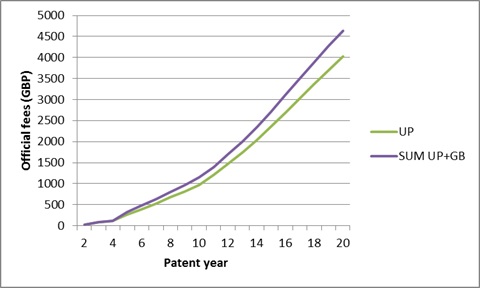It is a single patent granted by the European Patent Office (EPO) covering all European Union (EU) states that have ratified the relevant agreement at the date of grant of the patent. It is enforceable and revocable as a whole across all the participating states by a new Unified Patent Court (UPC). It is (for the foreseeable future) only open for EU states to participate, so it is like an EU patent that exists alongside other patents in which the European Patent is granted (such as the UK, Switzerland, Norway and Turkey) and other EPO states that are not EU states. It can also exist alongside patents granted by the EPO and validated in EU states that are not participating, such as Spain and Poland.
See our FAQ about the Unified Patent Court
What are the similarities and differences to a European patent (EP)?
Prosecution of UP applications will be the same as for European patent (EP) applications. They can be prosecuted through the EPO by Maucher Jenkins European Patent Attorneys in our offices in the UK or in Germany. The differences begin after grant. Whether, at the time of grant, the UP is requested is an option open to applicants.
The "traditional" validation route is still available. An EP application gives rise to separate national patents in each state in which the EP is validated. It can be validated in up to 38 states (although it is rare to do so in all the available states). The resulting national validations are subject to separate renewal fees and translation requirements (including the relaxations permitted by the London Agreement) and can be enforced and/or invalidated separately. This will remain the option for UK, Spain, Switzerland and other non-EU states that are EPO Member States. It will also remain the option for a number of EU states who have not yet ratified the relevant agreements, until such time as they do.
Conversely, a UP is a single patent covering all states signed up to the new system at the date of grant. At the start of 2022 there are 17 such states. For one patent covering all these states, a single annual renewal fee will be payable. The required translations are modified. A single translation may be filed centrally at the EPO, rather than at the individual national offices. The patent can be enforced or invalidated (before the new court) with effect across all states which it covers.
How do I get a UP?
A UP is obtained by first applying in the normal way for a European patent (directly or through the PCT system), and requesting unitary effect within 1 month of the date of grant (using EPO Form UP7000). The request for a unitary patent may be filed before grant.
During a transitional period of, initially, six years, a translation will have to be filed with the EPO. Where the language of the original application is English, a full translation of the specification of the European patent into one other official language of the EU is required. Spanish is likely to be a popular choice, as the text can be re-used for validation in Spain. Where the original application is in German or French, a translation into English will suffice.
What if an EP application is due to grant before the unitary patent system begins?
The grant date of your patent at the EPO may be delayed on request so as to push the grant beyond the start of the new system (expected to be September 2022) and make the UP an option. This option will be available from a date yet to be announced (expected to be in May 2022) and for 4 months before the start of the system. It can be requested simply by filing EP Form 2025 and there is no fee. If you have already received notice of intention to grant a European patent and the deadline to respond is imminent, you may wish to speak to your Maucher Jenkins patent attorney about other options to delay so as to benefit from this facility.
What states does a UP cover?
A UP covers the following 17 countries: Austria, Belgium, Bulgaria, Denmark, Estonia, Finland, France, Germany, Italy, Latvia, Lithuania, Luxembourg, Malta, the Netherlands, Portugal, Slovenia, Sweden.
It is quite possible that more may join before the system starts. Equally, however, it is not expected that all EU states will be available from the outset (e.g. Ireland and Croatia may not be ready) and some have declared a positive intention to remain outside the system (Spain and Poland).
What about non-contracting states when a UP has been requested?
An EP application becomes a UP, if requested, in the states covered by the UP at the date of grant. The EP may be validated in non-contracting states, as for a standard European patent. Validation in the UK, for example, remains very cheap and is expected to remain popular.
What translations are necessary?
It will remain necessary to file claims in English, French and German before grant of a European patent. Then, if unitary effect is to be requested, a full translation will have to be filed (see "How do I get a UP" above). Such translation should be filed "as soon as possible after the date of the submission of a request for unitary effect" (Article 6(1) Regulation (EU) No 1260/2012). The translation has no legal effect, but cannot be a machine translation. For validation in other EPO states that are not (or not yet) participating, the usual rules apply. See our Fact Card: EPC States At-a-Glance
Some states (like the UK and Ireland) will require no further translation and will remain popular validation states in the "traditional" way.
What are the advantages of a UP?
Reasons why a UP may be advantageous include:
- No need to validate separately in each state covered by the UP, therefore reduced post-grant costs compared to validating in many UP states (e.g. more than four)
- One central renewal fee to be paid to the EPO
- Central enforcement via the Unified Patent Court
- Access to inspection orders (and other powers) via the Unified Patent Court
What are the disadvantages of a UP?
Reasons why a UP may not be advantageous include:
- Cost effective only if you require a patent covering multiple (e.g., more than four) UP states
- Some significant states are not part of the UP, including the UK, Spain, Republic of Ireland, and Poland. An EP patent must be validated in the usual way to obtain protection in these states.
- Your UP can be revoked centrally by the Unified Patent Court and not just by filing opposition in the first 9 months, so it is a case of "all eggs in one basket".
What are the costs for obtaining a UP?
An application from which a UP ultimately results will start life as an EPC application in the usual way. The costs to grant will be the same.
During the transitional period a translation of the specification will have to be prepared and filed with the EPO, incurring associated costs. This could be high if the specification is very long. Quality is unimportant, but it is not supposed to be a machine translation. (How this might be tested or enforced is very unclear.) It could, for example, be in Greek. Spanish (and indeed Polish) may be a popular choice because a good quality translation into Spanish can be re-used for validation in Spain (or the same for a Polish translation used in Poland). Drawing a clear cost comparison between the UP route and the traditional route very much depends on the length of the document and on what states are to be chosen for validation. Please ask your Maucher Jenkins Attorney for an estimate.
In parallel, you can validate your European patent in the UK (which, following Brexit, is not participating in the UP) and this is very inexpensive, because there the are no translation costs.
What are the costs for renewing a UP?
Subsequently, an annual renewal fee will be due to the EPO. This renewal fee is set to be similar to the sum of annual renewal fees paid to maintain four EP validations (e.g., a European Patent validated in FR, DE, NL, and AT). The annual renewal fees to maintain a UP may be found at: https://www.epo.org/law-practice/unitary/unitary-patent/cost.html .
The following chart shows that the incremental additional fee for renewal in the UK is small. We anticipate UP + UK will be a very popular combination:

The content of this article is intended to provide a general guide to the subject matter. Specialist advice should be sought about your specific circumstances.


